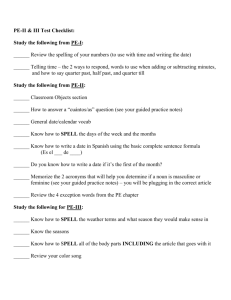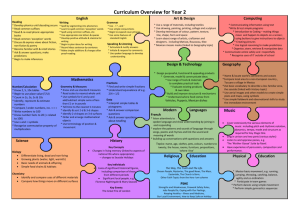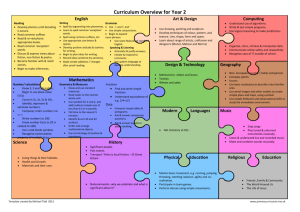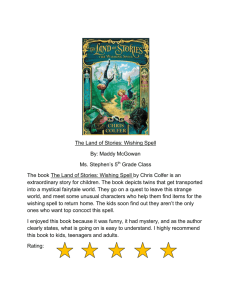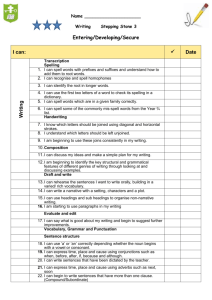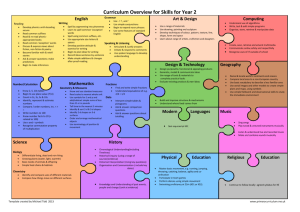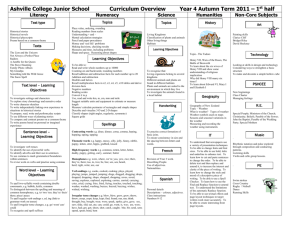Year 6 Writing Pathway
advertisement
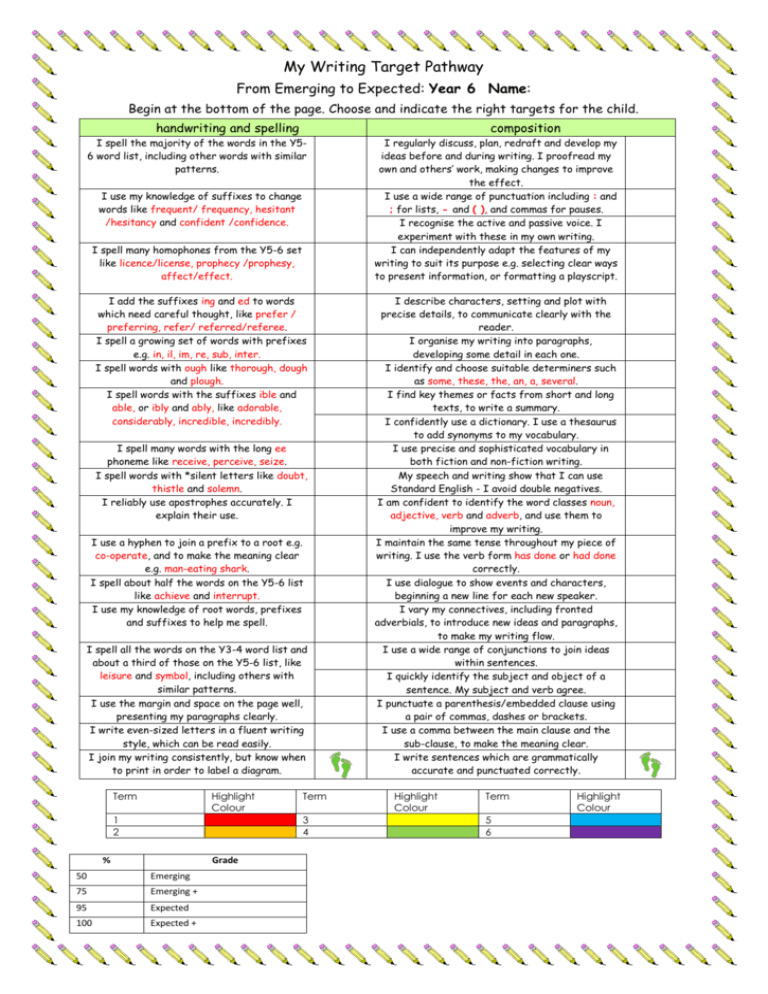
My Writing Target Pathway From Emerging to Expected: Year 6 Name: Begin at the bottom of the page. Choose and indicate the right targets for the child. handwriting and spelling composition I spell the majority of the words in the Y56 word list, including other words with similar patterns. I use my knowledge of suffixes to change words like frequent/ frequency, hesitant /hesitancy and confident /confidence. I spell many homophones from the Y5-6 set like licence/license, prophecy /prophesy, affect/effect. I add the suffixes ing and ed to words which need careful thought, like prefer / preferring, refer/ referred/referee. I spell a growing set of words with prefixes e.g. in, il, im, re, sub, inter. I spell words with ough like thorough, dough and plough. I spell words with the suffixes ible and able, or ibly and ably, like adorable, considerably, incredible, incredibly. I spell many words with the long ee phoneme like receive, perceive, seize. I spell words with *silent letters like doubt, thistle and solemn. I reliably use apostrophes accurately. I explain their use. I use a hyphen to join a prefix to a root e.g. co-operate, and to make the meaning clear e.g. man-eating shark. I spell about half the words on the Y5-6 list like achieve and interrupt. I use my knowledge of root words, prefixes and suffixes to help me spell. I spell all the words on the Y3-4 word list and about a third of those on the Y5-6 list, like leisure and symbol, including others with similar patterns. I use the margin and space on the page well, presenting my paragraphs clearly. I write even-sized letters in a fluent writing style, which can be read easily. I join my writing consistently, but know when to print in order to label a diagram. Term Highlight Colour 1 2 Term 3 4 % Grade 50 Emerging 75 Emerging + 95 Expected 100 Expected + I regularly discuss, plan, redraft and develop my ideas before and during writing. I proofread my own and others’ work, making changes to improve the effect. I use a wide range of punctuation including : and ; for lists, - and ( ), and commas for pauses. I recognise the active and passive voice. I experiment with these in my own writing. I can independently adapt the features of my writing to suit its purpose e.g. selecting clear ways to present information, or formatting a playscript. I describe characters, setting and plot with precise details, to communicate clearly with the reader. I organise my writing into paragraphs, developing some detail in each one. I identify and choose suitable determiners such as some, these, the, an, a, several. I find key themes or facts from short and long texts, to write a summary. I confidently use a dictionary. I use a thesaurus to add synonyms to my vocabulary. I use precise and sophisticated vocabulary in both fiction and non-fiction writing. My speech and writing show that I can use Standard English - I avoid double negatives. I am confident to identify the word classes noun, adjective, verb and adverb, and use them to improve my writing. I maintain the same tense throughout my piece of writing. I use the verb form has done or had done correctly. I use dialogue to show events and characters, beginning a new line for each new speaker. I vary my connectives, including fronted adverbials, to introduce new ideas and paragraphs, to make my writing flow. I use a wide range of conjunctions to join ideas within sentences. I quickly identify the subject and object of a sentence. My subject and verb agree. I punctuate a parenthesis/embedded clause using a pair of commas, dashes or brackets. I use a comma between the main clause and the sub-clause, to make the meaning clear. I write sentences which are grammatically accurate and punctuated correctly. Highlight Colour Term 5 6 Highlight Colour

